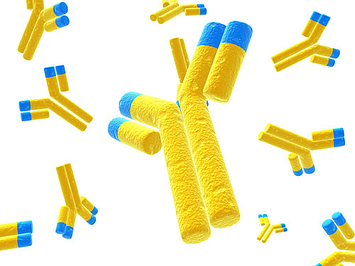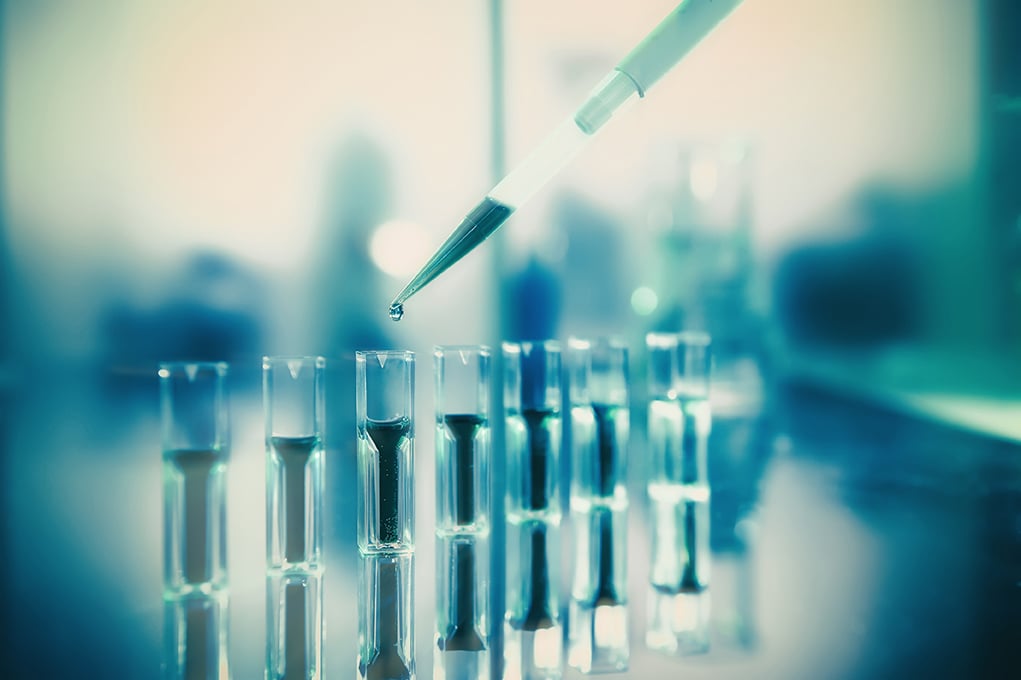
The immune system is a unique arrangement of different cells, tissues, and organs working together as a defense against infection and diseases. All elements of the immune system interconnect with each other. The immune system is classified as two types:
- Innate immune system
- Adaptive immune system
All the cells of the immune system develop from bone marrow's Hematopoietic stem cells that later differentiate into Myeloid and Lymphoid progenitors. Each of them differentiates further into various cell types.
Innate immune system:
Innate immune responses are nonspecific and respond to infection quickly and consistently. Though they are general and nonspecific, they play a very important role in protecting the body from external infections. Their activity is based on pattern recognition receptors (PRRs).
The innate immune system comprises mostly the cells from Myeloid Progenitor.
- Neutrophils- Neutrophils are the granulocytic leukocytes, that have multi-lobed nuclei. They are the first cells that act at the site of tissue damage to eliminate pathogens especially bacteria by phagocytosis. A type of cell located in the bloodstream, quickly ingesting and destroying microorganisms. Neutrophils rise in number in the bloodstream through illness and are primarily responsible for the elevated amount of white blood cells associated with some infections.
- Eosinophils- Eosinophils are also granulocytic leukocytes with a kidney-shaped, lobed nucleus. They release the contents of their granules to kill pathogens. They produce a variety of growth factors and cytokines and helps other immune cells.
- Basophils- Basophils are the largest granulocytic leukocytes with a bilobed nucleus. They have histamine-rich granules and involve in inflammatory responses. They help in the secretion of cytokines involved in the maturation of T-helper cells.
- Monocytes- A type of phagocytic cell located in the bloodstream that, when moving to tissues, transforms into a macrophage. Monocytes are the largest white blood cells that produce Macrophages & Dendritic cells.
- Macrophages engulf and process cell debris, pathogens, and cancer cells. They are involved in wound healing, tissue regeneration, and pro-inflammatory activities.
- Dendritic cells are present in tissues like skin, lungs, and intestines. They present antigens to B and T cells and also secretes cytokines. Sensitive cells introduce antigen to cells in the immune system.
- Mast cells- are granulocytes, that secrete heparin, histamine, other factors. They help in wound healing, angiogenesis, and elimination of parasites.
- Natural killer (NK) cells (May develop from both Myeloid and Lymphoid progenitor). NK cells are produced from the bone marrow and are found in the bloodstream and tissues in reasonably low quantities. They are cytotoxic cells that have small granules with perforins and granzymes and destroys infected cells and cancer cells rapidly.
Adaptive immune system:
The adaptive immune system develops specific immune reactions. It comprises cells from Lymphoid progenitor.
- B-Cell Progenitor- Throughout the bone marrow, these lymphocytes emerge and divide into plasma cells, which in effect develop into immunoglobulins (antibodies). Differentiates into Memory cells & Plasma cells.
- Plasma cells grow from B-cells and are the components that form the serum and the discharges for immunoglobulin.
- Immunoglobulins are extremely modified protein components, also identified as antibodies, match foreign antigens, like a key and lock. Their diversity is so large that they can be generated to suit any microorganism in the ecosystem.
- T- Cell Progenitor- Differentiates into Helper T-cell & Cytotoxic T-cell
- Cytotoxic T-cells: Such lymphocytes germinate in the thymus and kill contaminated or infected cells. Regulatory T-cells kill other T-lymphocytes or switch them off. The immune system will begin to work without regulating cells, even though illness has been healed.
- Helper T-cells: These advanced lymphocytes are "helping" other T-cells and B-cells to work. That T-cell interacts with a specific antigen, much like that molecule of an antibody interacts with a particular antigen. In reality, T-cells have antibodies-like molecules on their surfaces. This is such a vast array of specific T-cells that the body has T-cells that can respond to nearly any antigen.
How the immune system fights infections:
- Bacteria: Our bodies are loaded with microbes, and bacteria are found in some regions of our environment. The skin and mucous membranes inside us serve as physical defenses to help avoid infection. If the skin or mucous membranes are damaged owing to illness, disease, or damage, the bacteria are then absorbed by neutrophils and killed. If both of the protein complements and neutrophils function correctly, this method permanently destroys the bacteria. Nevertheless, repeated bacterial infections may arise when the amount of bacteria is disproportionate, or there are defects in the development of antibodies, complements, or neutrophils.
- Viruses: Many of us often get introduced to viruses. The way our bodies protect themselves from viruses is separate from the way we fight bacteria. It is only inside our cells that viruses can live and replicate. When a virus infects a cell, cytokines are released into the cell to notify other cells to the infection. This "warning" usually precludes the invasion of other cells. Sadly, specific pathogens will find a way to beat this defensive technique, and the infection tends to propagate. Circulating T-cells and NK cells are alerted to an invasion of the virus and move to the location where they invade the different cells that host the virus. This is a very damaging method for destroying the virus as it may destroy several of our cells in the process. For a second time, if we're subjected to the same strain, the antibodies help avoid the infection. Memory T-cells are also formed, and they react quickly to a second infection, which often contributes to a milder infection path.
References:
- Clark, Rachael, and Thomas Kupper. (2005)"Old meets new: the interaction between innate and adaptive immunity" Journal of Investigative Dermatology 4: 629-637.
- Parker, George "Cells of the Immune System". In: Parker G.(eds). (2017) Immunopathology in Toxicology and Drug Humana Press, Cham. 95-201. https://doi.org/10.1007/978-3-319-47377-2_2
- Cichocki, F., Grzywacz, B., & Miller, J. S. (2019). Human NK Cell Development: One Road or Many?. Frontiers in immunology, 10, 2078. https://doi.org/10.3389/fimmu.2019.02078





